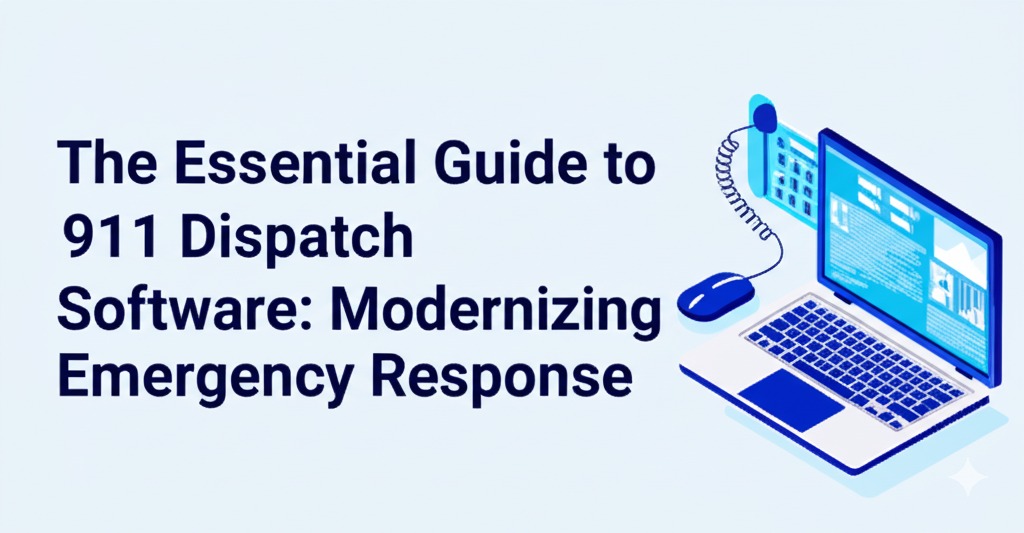The Essential Guide to 911 Dispatch Software: Modernizing Emergency Response
When every second counts, 911 dispatch software becomes the critical link between chaos and control. As emergency response demands evolve, so too must the technology that supports it. From real-time GPS tracking to seamless communication with first responders, this software is the silent hero behind life-saving operations.
In this guide, we’ll explore what 911 dispatch software is, how it works, key features, benefits, and what agencies should consider when choosing the right system.
What is 911 Dispatch Software?
911 dispatch software, also known as Computer-Aided Dispatch (CAD) software, is a system used by emergency call centers to manage and coordinate public safety responses. This technology enables dispatchers to receive emergency calls, assign appropriate resources, and monitor real-time updates—all within one streamlined interface.
Who Uses It?
- Emergency call centers (Public Safety Answering Points or PSAPs)
- Law enforcement agencies
- Fire departments
- Emergency Medical Services (EMS)
Key Features of 911 Dispatch Software
Modern 911 dispatch software offers a wide array of features designed to improve response times, accuracy, and communication.
1. Real-Time GPS Tracking
Dispatchers can locate units on a live map, ensuring the nearest responder is dispatched to the scene.
2. Automated Call Handling
Systems can route and prioritize calls based on urgency, reducing manual workload and minimizing delays.
3. Integrated Mapping and GIS
Geographic Information System (GIS) integration allows responders to visualize incident locations, street-level details, and even hazards in the area.
4. Mobile Access for Responders
Mobile-compatible software gives responders updates, directions, and the ability to input reports on the go.
5. Interagency Communication
Seamless sharing of information across police, fire, and EMS departments improves collaboration and reduces redundancy.
Why 911 Dispatch Software Matters
The efficiency of an emergency response often hinges on the tools used behind the scenes. Here’s why modern dispatch software is indispensable:
Faster Response Times
By automating dispatch workflows and using GPS to locate units, the software helps reduce critical time between call and arrival.
Improved Accuracy
Integrated databases and pre-filled templates reduce the risk of human error and improve data consistency.
Enhanced Public Safety
With better communication and resource allocation, communities benefit from faster, more coordinated emergency responses.
Data and Reporting
Built-in analytics help agencies review performance, monitor trends, and make informed decisions for future improvements.
How 911 Dispatch Software Works
Let’s break down the process from the moment a call comes in:
- Call Reception: A dispatcher receives the emergency call and inputs essential information.
- Assessment & Prioritization: The software assists in categorizing the urgency and type of emergency.
- Resource Assignment: Using GPS and real-time availability, the system suggests and assigns the closest, most appropriate unit.
- Ongoing Communication: Dispatchers and responders maintain contact via mobile apps, radio integration, or real-time messaging.
- Incident Closure & Reporting: Once resolved, the system logs the event, generates a report, and archives it for review.
Choosing the Right 911 Dispatch Software
There are several vendors on the market, each offering different strengths. Here are some factors to consider when selecting a system:
1. Scalability
Can the software grow with your organization? Choose a system that can adapt to increasing call volumes and new technologies.
2. Ease of Use
User-friendly interfaces reduce training time and empower dispatchers to work more efficiently.
3. Integration Capabilities
Ensure compatibility with existing systems like RMS (Records Management Systems), CAD-to-CAD communication, or emergency notification tools.
4. Compliance and Security
Look for software that adheres to CJIS standards and provides robust cybersecurity protections.
5. Vendor Support and Training
Reliable technical support and ongoing training make a big difference during emergencies and system upgrades.
Leading 911 Dispatch Software Providers
While there are many options, a few industry leaders stand out:
- Spillman Flex by Motorola Solutions
- Hexagon Safety & Infrastructure
- Tyler Technologies
- CentralSquare
- RapidDeploy
Each offers unique features, so comparing demos and gathering user feedback is essential.
The Future of Emergency Dispatch
Emerging technologies are shaping the next generation of 911 dispatch:
- AI-assisted call handling for better prioritization.
- NG911 (Next Generation 911) enabling text, image, and video dispatching.
- Cloud-based systems for better flexibility and disaster recovery.
- Predictive analytics to anticipate resource needs based on historical data.
These advancements promise smarter, faster, and more responsive emergency services.
Final Thoughts
911 dispatch software is more than just a digital logbook—it’s the heartbeat of emergency response operations. By streamlining workflows, enhancing communication, and leveraging real-time data, it helps save lives every day.
If you’re a public safety agency looking to upgrade or implement a new system, now is the time to act. Evaluate your needs, consult your teams, and choose a solution that supports both your dispatchers and your community.

Zain Jacobs is a writer for TheNetUse, providing in-depth reviews, tips, and insights on the latest software apps to help users maximize their digital experience.






